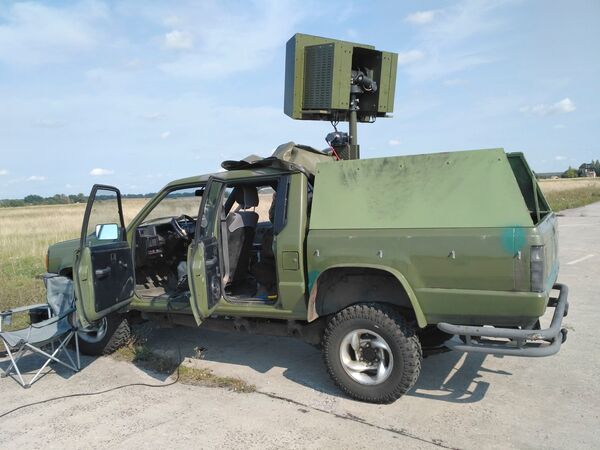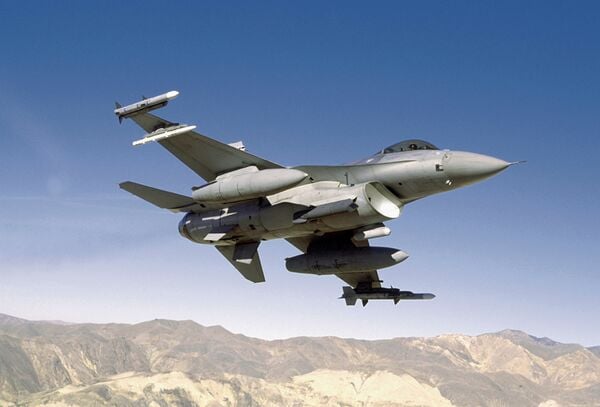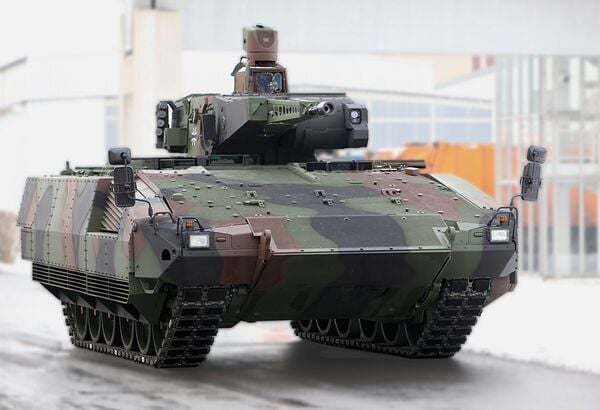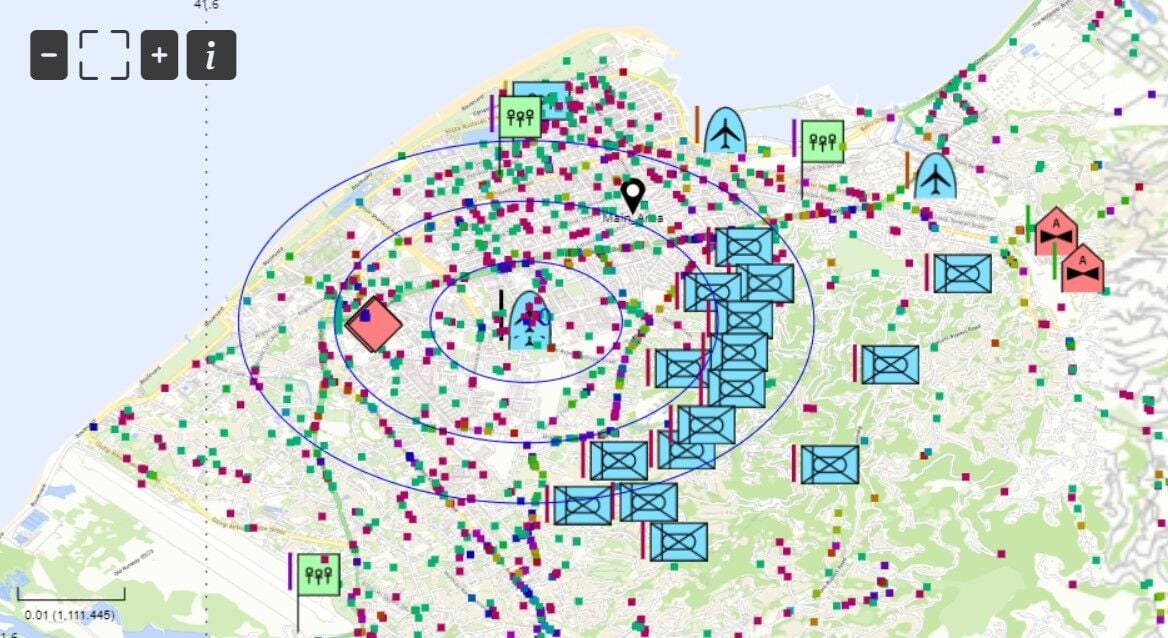- About
- Intara
- Capabilities
- Advisory
- Resources
- News
- Store
Ukraine conflict: Ukraine's electronic warfare systems in focus
04 March 2022
by Sunil JB Babu & Huw Williams


The Bukovel-AD system is intended to be used primarily as a counter-UAV system. (Mikhail Zhirohov)
The Ukrainian armed forces have acquired and fielded a range of electronic warfare (EW) systems in recent years, with a mix of new equipment and improved legacy systems.
Most of the development has taken place since Russia annexed Crimea in 2014, and was driven by its support for the breakaway regions of Donetsk and Luhansk, which has seen Russian forces employ a range of EW assets.
Counter-unmanned aerial vehicle (C-UAV), direction finding, communications jamming, and precision-guided weapon jamming capabilities have been developed. Among these is the Bukovel-AD anti-UAV system, which was developed specifically to counter the Orlan-10 UAV that is employed as an EW asset to intercept and jam 3G, 4G, and Global System for Mobile Communications (GSM) cellular communications, as well as to broadcast text messages.
Developed by Proximus – a private Ukrainian company – the Bukovel-AD can detect UAVs operating as far away as 100 km, with an effective range of up to 50 km. On detection of the UAV, the system can employ radio frequency (RF) countermeasures that are designed to interfere with the datalink between the UAV and its ground control station (GCS). It can jam the Global Positioning System (GPS) and Global Navigation Satellite System (GLONASS) control and navigation signals, with a maximum suppression range of 16 km. During the Russian troop buildup ahead of its invasion of Ukraine, the Bukovel-AD was deployed in the Donbas region and tested against the Orlan-10.
The frequent use of UAVs by the Russian-backed rebels in the Donbas was the driver behind the development of the Nota EW system. Nota is designed to provide perimeter protection, detecting and jamming UAVs at a maximum range of 20 km. The system also has the ability to jam cellular communications within 1 km. It is intended to operate predominantly in a silent or stealth mode, and only directs its jamming function upon the detection of a threat.
In addition to its C-UAV role, Nota also provides direction-finding capabilities to detect RF signals – GSM, VHF, LTE, and CDMA – radar emission in the L, S, C, and X frequency bands, and the GPS, GLONASS, and BeiDou satellite systems. At the 2019 Arms & Security Expo, the system's manufacturer, Tritel, introduced a mobile version of Nota that enables the crew to quickly move the system to a new position.
The Mandat-B1E R-330UM radio communication jamming complex is an evolved system. It is designed to gather data on emission sources and then radiate a targeted barrage jamming signal or conduct selective jamming within an area. The system also aids in identifying and locating unit movements and disposition based on radio emissions. Furthermore, it can interfere with fixed or programmable communications frequencies via a frequency-hopping technique.
The ability to jam and interfere with the control and telemetry channels used by precision-guided munitions – and UAVs – is brought by the Anklav system, which is designed to suppress in the 400–2,500 MHz frequency range. It has a stated operating range of up to 40 km using directional antennas, and up to 20 km with omnidirectional antennas.
Lockheed Martin to ramp up UK Sniper production
24 April 2024
by Gerrard Cowan


Seen being carried by a US Air Force F-16, the Sniper ATP is built in Florida in the US and Bedfordshire in the UK. Lockheed Martin is now ramping up UK component production to meet increased customer demand. (Lockheed Martin)
Lockheed Martin is building a new production line for AN/AAQ-33 Sniper Advanced Targeting Pod (ATP) components at its Ampthill, Bedfordshire site in the UK, seeking to meet anticipated demand from NATO allies and other customers for the system, the company has told Janes .
The UK-based work on Sniper supports the manufacturing activities at Ocala, Florida. This work has been expanded with a new production line at Ampthill that will focus on producing cabling to integrate the system into aircraft.
Stacy Kubicek, Lockheed Martin's vice-president and general manager – sensors and global sustainment, said the fresh investment is part of a wider strategy at Lockheed Martin. She placed it into the context of a shifting outlook among customers.
Germany orders simulators for Puma IFVs
19 April 2024
by Olivia Savage


The Bundeswehr has ordered 258 sets of AGDUS systems for its Puma IFVs following successful integration tests. (PSM GmbH)
The Bundeswehr is receiving new training simulators for its Puma infantry fighting vehicles (IFVs).
In total, 258 sets of Training Device, Duel Simulator (Ausbildungsgerät Duellsimulator: AGDUS) systems are being delivered for the Puma IFVs by the end of 2026, the Bundeswehr announced on 15 April.
The EUR109 million (USD116 million) contract will be financed from the EUR100 billion Bundeswehr special fund.
A Rheinmetall/Krauss-Maffei Wegmann (KMW) consortium received an order from the Bundeswehr in December 2019 valued at EUR54 million for the provision of six AGDUS systems for integration tests on the Puma. Full-scale serial production of AGDUS would then begin once testing was complete, with up to 252 Puma IFVs being equipped with the systems for EUR88 million.
A Rheinmetall spokesperson confirmed to Janes that the company, along with KMW+Nexter Defense Systems (KNDS) Germany, are supplying the new AGDUS simulators to the Bundeswehr and that full-scale production has now officially begun.
Hadean, 4C Strategies integrate products to reduce training burden
18 April 2024
by Giles Ebbutt


A screenshot of the Hadean POLI constructive simulation displayed through the 4C Strategies Exonaut training management software. (Hadean)
Hadean and 4C Strategies have successfully integrated a constructive simulation with Exonaut exercise management software, utilising Hadean's spatial computing platform.
The integrated solution, displayed at the International Training Technology Exhibition & Conference (IT²EC) 2024 in London, enabled Hadean's Pattern of Life Indicator (POLI) constructive simulation to be controlled from within 4C Strategies Exonaut software.
Exonaut is widely used in the UK and NATO as an exercise management tool, while constructive simulation is fundamental to effective command and staff training. Integrating the two previously separate functions offers the potential to improve training.
Explaining the integration, Paul Steel, UK military sales director for 4C Strategies, told Janes
The Ukrainian armed forces have acquired and fielded a range of electronic warfare (EW) systems in r...
Latest Podcasts
Iran Israel analysis
In this podcast Janes analysts discuss the Iranian attacks on Israel on the 14 April. They highlight the military systems used by Iran and the performance and impact of these on Israel. They also discuss the implications of this attack goi...
Listen nowJanes Case Studies
Using Janes Intara to build a common intelligence picture: Russian build up on the Ukrainian border
View Case StudyNews Categories
 C4ISR Details
C4ISR Details